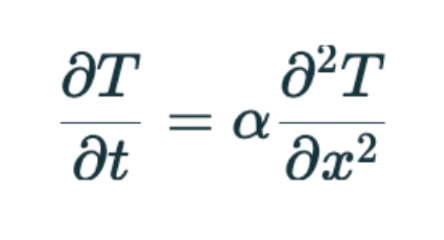Case #1: Performance Improvement of a PlanT with Systemic Constellation
- Marco Schlimpert

- Jul 13
- 6 min read
Updated: Aug 30
What if you could recognize today whether your plans will actually be successful?

How to make hidden organizational dynamics in industrial companies visible and achieve breakthrough solutions in the shortest time.
Why isn't the plant in the USA running stably anymore? A real case study
A chemical conglomerate was struggling with massive quality problems at its US production facility. Six months of intensive data analysis, numerous expert reports from process engineers, Lean Six Sigma initiatives, and countless video conferences led to no breakthrough success. The KPIs showed improvement approaches, but the fundamental problems persisted.
In this situation, management decided on an unconventional approach: a systemic constellation. What followed not only fundamentally changed the view of the problem but led to insights within a few hours that months of analysis had not brought to light.
The result? Within three months, the US plant regained its original performance. The solution lay not in new machines or processes – but in the dynamics between locations that became visible through the constellation.
What is systemic constellation in industry and why does it work?
Systemic constellation in industry is an innovative method of systemic organizational development that makes organizational structures, relationships, and dynamics in industrial companies visible through the spatial positioning of elements by representatives. Unlike traditional approaches to strategic management, not only numbers and facts are considered, but also the often invisible forces and interactions within industrial systems are captured.
The phenomenon of representative perception
The most fascinating aspect of systemic constellation is representative perception. People who represent various elements of a system in a constellation – whether departments, markets, products, or strategic goals – amazingly begin to feel the qualities and dynamics of these elements, to sense them, and develop intuitions.
The process is guided by an experienced constellation facilitator whose task is to translate these perceptions into the language of business and commerce.
How did this look in the specific case?
1. Preparation and deriving specific question
Together with the client, the central question is sharpened and the relevant system elements are identified. First, the question was specifically formulated:
Why has there been a series of unplanned equipment shutdowns over the past 6 months?
The goal was to find out how the plant's equipment stability could be increased again.
Subsequently, the corresponding elements were identified whose interactions should be analyzed:
Equipment
Equipment stability
Equipment operators
Shift supervisors
Management
Local managing director
Board of directors
Technical causes that were defined in advance
In the next step, these topics were identified together with the participants and written by the moderator on a flipchart. This flipchart was positioned so that participants could no longer see the elements. The moderator randomly numbered the elements and placed corresponding numbers on Post-its in the center on the floor – the participants sat in a circle of chairs.
2. The constellation itself
Representatives position themselves in the room and embody the various system elements.
After a brief breathing exercise and meditation to let go of thoughts and arrive in the here and now, participants had the task of taking the number they felt most drawn to and sticking it on their chest. At this moment, the participants became representatives in the systemic constellation.
Then they should find a place in the room where they felt most comfortable.
Through careful interventions, tensions, blockages, and potentials are made visible.
The method works with the collective intelligence of the group. The moderator now asked questions like: "On a scale of 1-10: have you found your ideal place?" Or: "What relationship do you have with which other elements?" Or: "Would you like to stand somewhere else?"
Often the representatives have an impulse to move that they want to follow – thus the original picture changes. Experience shows that the current situation becomes visible after the second movement impulse.
In this case, it turned out:
The board had assigned the local managing director so many tasks and queries that he no longer had time to make regular production rounds. The managers were completely focused on his instructions. The equipment operators and shift supervisors felt neglected and sought recognition from the managing director. However, he only came to production when there were problems. Thus, the equipment operators "hid" and only did their job according to regulations. Preventive cleaning or maintenance was no longer carried out by production personnel, so equipment stability declined. The technical problems showed particularly clearly.
3. Follow-up and implementation
The gained insights are translated into concrete action steps. The connection of symbolic insights with practical management measures is decisive. With this current state picture, we could now work on the solution and test it directly in the constellation: We brought the Senior Vice President as a new element into the constellation. He took over the buffer function between the board and the managing director. He prioritized concerns and developed a strategy with the managing director that was presented to the board.
Thus, the managing director had less direct interaction with the board and could again focus more intensively on his own employees. Within a short time, equipment performance rose again – the key was appreciation for employees and reduction of "micromanagement."
The result sounds plausible in retrospect – but was absolutely unexpected in the situation.

The science behind the phenomenon
The rainbow effect: Why not everything needs to be explainable
Imagine you see a rainbow. Do you stop and enjoy this natural spectacle? Most people find it beautiful without looking for a scientific explanation in that moment.
Nevertheless, the rainbow was enigmatic for centuries until René Descartes developed the first interpretation attempt in 1637 and Newton later discovered dispersion. Today we understand the physical processes – yet the rainbow existed and worked even before any scientific explanation.
The same applies to systemic constellation. Representative perception and the resulting insights are real and effective, even if they still elude our complete scientific understanding. Their inexplicability does not make them less existent – just as the rainbow shone for centuries before science could penetrate it.
Unlocking new dimensions of perception in systemic organizational development
Systemic constellation is an innovation in business management and strategic management because it opens up new possibilities of perception. In remarkably short time, it reveals profound insights that would only emerge – if at all – after weeks of intensive investigation through traditional methods of strategic planning.
The special strength lies in the dual effect: It not only makes existing tension fields and challenges visible but simultaneously points the way to possible solutions.
Where can systemic constellation in industry be applied?
Strategy development and strategic planning: Systemic constellations can "play through" various strategic options and make their effect visible in the future before final decisions are made in strategic management. Which of the strategic options is successful?
Change management and systemic organizational development: Resistances and hurdles n change processes are recognized early and can be specifically addressed. What obstacles exist in the change project and how can employees be brought along?
Budgeting and strategic planning: The influencing factors of the budget can be determined very quickly, simulations of business scenarios can be carried out, and the effects on the budget can be determined without lengthy Excel analyses in traditional strategic management.
Crisis management: In complex crisis situations, the method helps maintain overview and identify essential and effective fields of action.
Projects and investments: Even before starting a project, critical success factors can be made visible and their effects on the project simulated. Are there unforeseeable events that affect the project, and how can they be counteracted?
The added value for modern industrial leadership
Complex situations can be grasped and new action options developed in relatively short time. Not only the rationally comprehensible is considered, but also the implicit knowledge of the organization is utilized.
Systemic constellation in industry combines analytical precision with intuitive knowledge acquisition and thus creates a holistic approach to entrepreneurial challenges in strategic planning of industrial companies. It enables leaders in strategic management to understand and shape both the obvious and hidden dynamics of their organization.
In a time when complexity in industry is increasing exponentially and traditional methods of strategic planning reach their limits, systemic constellation in industry opens new dimensions of perception and action in systemic organizational development.
Ultimately, it provides the answer to the question: What does it take for my plans to be successful? Even before the project has started.
Sounds like a crystal ball? Perhaps, but it works.
First steps:
How to integrate systemic constellation into your industrial company
What question is occupying you?
Start with a specific, manageable question:
Why doesn't collaboration between two departments work optimally?
What factors hinder the implementation of a strategic initiative?
How can we better promote innovation in our company?
Which strategic option in strategic management will be successful?
What else must I consider in my next investment project to ensure successful implementation?
How can systemic organizational development accelerate our transformation?
Are you ready for the next step?
Discover how systemic constellation can solve concrete challenges in your company. As an experienced transformation expert and leadership mentor, I support you in opening new dimensions of perception and developing breakthrough solutions.
Together, we create "Clarity beyond Strategy".






Comments